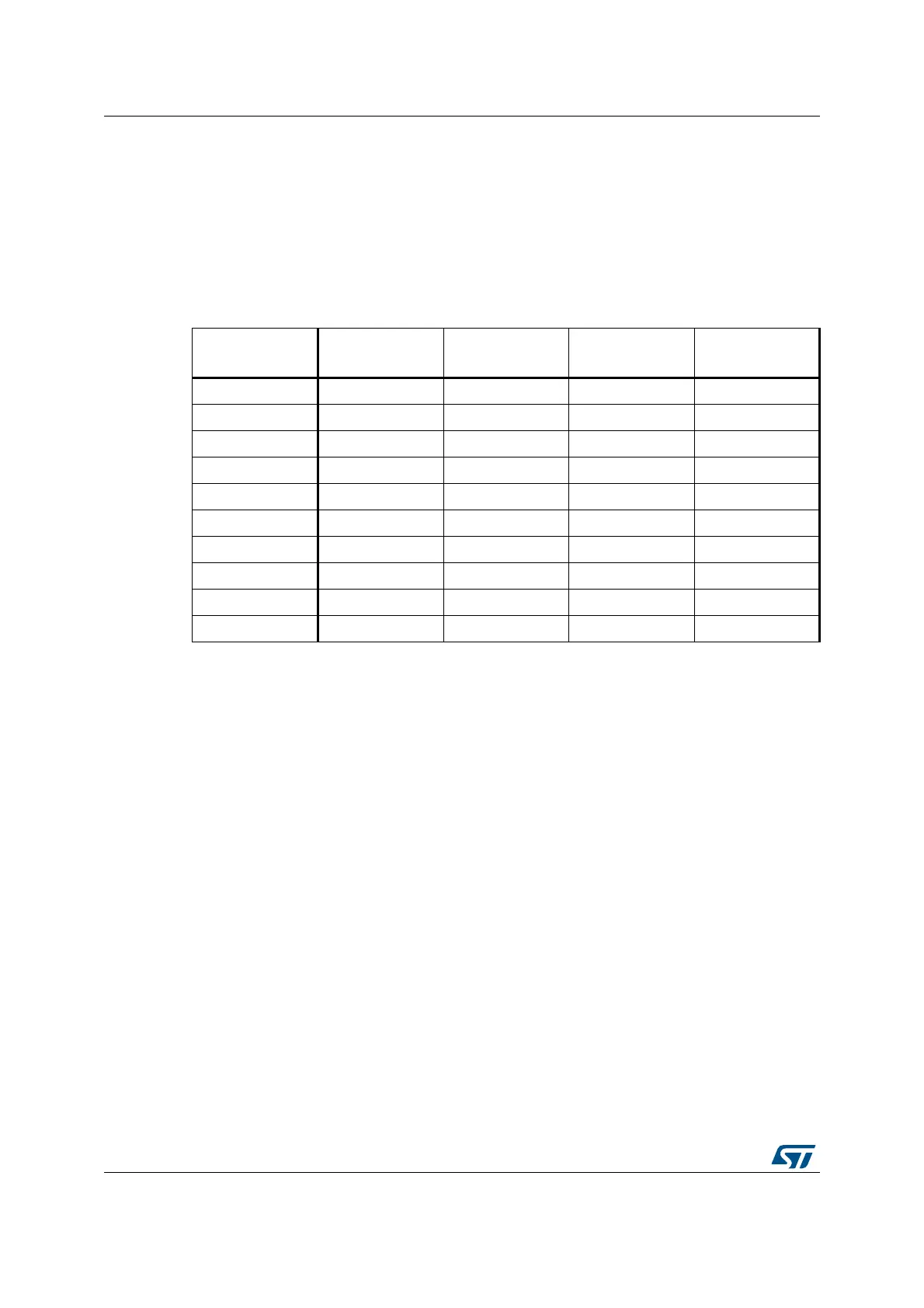High-resolution timer (HRTIM) RM0440
890/2126 RM0440 Rev 4
transmitted as a correct external event. Consequently, the digital filter adds a latency to the
external events being filtered, depending on the sampling clock and on the filter length
(number of valid samples expected).
The sampling clock is either the f
HRTIM
clock or a specific prescaled clock f
EEVS
derived
from f
HRTIM
, defined with EEVSD[1:0] bits in HRTIM_EECR3 register.
Table 222 summarizes the available features associated with each of the 10 external events
channels.The features and sources are summarized in Table 208.
Latency to external events
The external event conditioning gives the possibility to adjust the external event processing
time (and associated latency) depending on performance expectations:
• A regular operating mode, in which the external event is resampled with the clock
before acting on the output crossbar. This adds some latency but gives access to all
crossbar functionalities. It enables the generation of an externally triggered high-
resolution pulse.
• A fast operating mode, in which the latency between the external event and the action
on the output is minimized. This mode is convenient for ultra-fast over-current
protections, for instance.
EExFAST bits in the HRTIM_EECR1 register allow to define the operating for channels 1 to
5. This influences the latency and the jitter present on the output pulses, as summarized in
the table below.
Table 222. External events features
External event
channel
Fast mode Digital filter
Balanced fault
timer A,B,C
Balanced fault
timer D,E,F
hrtim_eev1[4:1] Yes - - -
hrtim_eev2[4:1] Yes - - -
hrtim_eev3[4:1] Yes - - -
hrtim_eev3[4:1] Yes - - -
hrtim_eev5[4:1] Yes - - -
hrtim_eev6[4:1] - Yes Yes -
hrtim_eev7[4:1] - Yes Yes -
hrtim_eev8[4:1] - Yes - Yes
hrtim_eev9[4:1] - Yes - Yes
hrtim_eev10[4:1] - Yes - -

